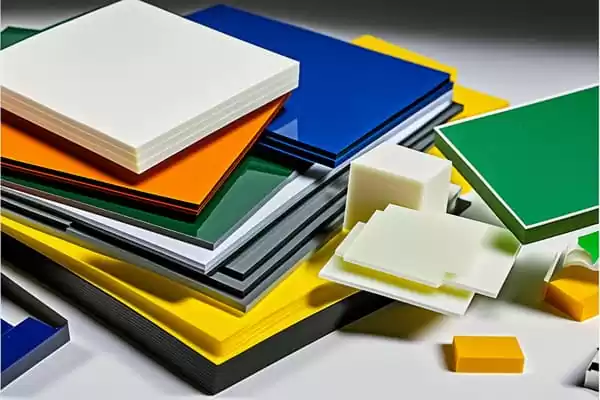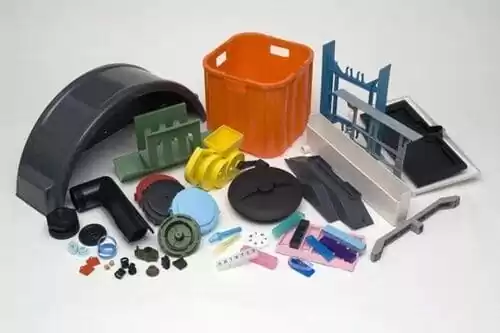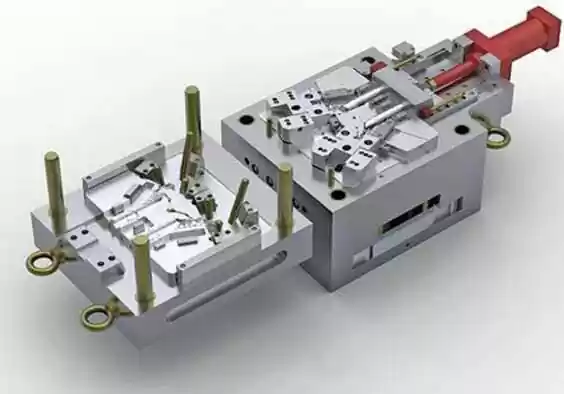Introduction
Injection molding is a highly utilized manufacturing process for creating plastic parts and products. It involves injecting molten plastic into a mold, allowing for the production of complex and precise components. Injection molding plays a vital role in various industries, including automotive, consumer goods, and medical devices, due to its ability to produce high volumes of parts with consistent quality.
Understanding the cost of injection molding is crucial for businesses and entrepreneurs. It enables them to make informed decisions when it comes to product development, manufacturing feasibility, and overall budgeting. By gaining insight into the factors that influence plastic injection molding costs, companies can optimize their processes, ensure cost-effectiveness, and maintain a competitive edge in the market.
In the following sections, we will delve into the key factors that contribute to the cost of plastic injection molding. From part design complexity and material selection to production volume and tooling costs, we will explore how each element affects the overall expenses low cost injection molding. By the end of this article, you will have a comprehensive understanding of the cost dynamics in plastic injection molding and be equipped to make informed decisions for your manufacturing projects.

II. Understanding the Basics of Injection Molding
Injection molding is an efficient manufacturing process for producing intricate plastic parts with exceptional detail and accuracy. It involves several steps, from creating the mold to injecting molten plastic and cooling it until solidifying its desired shape. Here is more detail:
An Injection Molding Machine and Its Function:
An injection molding machine serves as the core element in this process. Comprised of a hopper, barrel, reciprocating screw, heating elements and clamping unit – its primary purpose is melting plastic resin for injection into molds by melting and injecting. When combined with pressure on these cavities in molds – full fill is achieved!

Injecting Molten Plastic into the Mold:
To begin plastic injection molding, plastic resin must first be fed into a machine’s hopper before being transported to its barrel for heating by the heating elements. When this step has completed, once in its liquid state it is then forced forward through a reciprocating screw which pushes it further forward before injecting it directly into its mold cavity through a nozzle; usually made of steel or aluminum and designed specifically for injection molded parts to achieve desired part shapes.
Create the Detailed Part Shape:
As soon as molten plastic enters a mold, it fills its cavity and conforms to its internal surfaces, taking on their shape as intended by high pressure injection molding. After an appropriate cooling period has passed, the mold is opened up, and its solidified part ejected from it.
Versatility and Widespread Use:
Injection molding has long been recognized for its versatility, being utilized across industries. It allows the production of intricate parts with complex geometries, thin walls and intricate details that are highly suitable for automotive components, consumer goods, medical devices, electronics as well as many other sectors. Furthermore, mass producing parts with consistent quality at relatively fast cycle times has led to its widespread adoption.

Injection molding’s efficiency, repeatability, and ability to produce high volumes of parts has made it a go-to manufacturing method across various industries. By understanding its core concepts – machine functions and injection of plastic into molds – one can appreciate its many uses and value it plays in modern production.
III. Factors Influencing Injection Molding Costs
A. Part Design and Injection Mold Complexity
The complexity of the part design directly affects the cost of injection molding. Intricate designs with undercuts, thin walls, or complex geometries require specialized molds and additional processing steps, increasing production expenses. The more complex the design, the more intricate the mold needs to be, leading to higher tooling costs. Furthermore, complex molds, such as multi-cavity molds or those requiring electrical discharge machining, can significantly impact the overall cost of injection molding due to the increased complexity and time required for mold production.

B. Material Selection and Mold Material
Material selection plays a crucial role in injection molding costs. Different plastic resins have varying costs, and factors such as durability, flexibility, and appearance requirements influence material selection. High-performance resins may cost more but offer enhanced properties. Additionally, the choice of mold material, such as aluminum or stainless steel, can affect the cost. Aluminum molds are generally less expensive than steel molds but may have a shorter lifespan. The material selection for both the part and the mold should be carefully considered to optimize cost and quality.

C. Production Volume and Tooling Costs
Production volume has a significant impact on injection molding costs. Generally, higher production volumes lead to lower costs per part due to economies of scale. Tooling costs, including the design and fabrication of molds, are influenced by volume requirements. Custom molds for low-volume production can be expensive, while standard molds are more cost-effective for high-volume production. Balancing production volume with tooling costs is crucial in determining the overall cost efficiency of an injection molding project.
D. Equipment and Labor Costs
Equipment costs, such as injection molding machines, contribute to the overall expenses. Larger and more advanced machines may have higher upfront costs but can increase productivity and efficiency, potentially reducing the cost per part. Labor costs, including machine setup and operation, should also be considered. Skilled technicians and operators play a vital role in ensuring the proper functioning of the injection molding process. Technical expertise and experience in machine setup, maintenance, and troubleshooting can help optimize production efficiency and minimize downtime, ultimately impacting the overall cost of injection molding.
Understanding the factors that influence plastic injection molds cost and molding costs, such as part design complexity, material selection, production volume, and equipment and labor costs, allows manufacturers and businesses to make informed decisions. By considering these factors during the planning and design stages, it is possible to optimize the plastic injection molding process, control costs, and achieve the desired balance between quality, efficiency, and affordability.
IV. Calculating Injection Molding Costs
Calculating injection molding costs involves considering various factors, including material costs, tooling costs, labor costs, variable costs, and setup costs. Here’s an overview of how these costs are typically calculated:
Material Costs:
Determine the cost per unit of the plastic resin required for the part. This cost is based on the resin type, grade, and quantity needed for each part.
Multiply the cost per unit of resin by the weight of resin required for each part to calculate the material cost.

Tooling Costs:
Tooling costs include the design and fabrication of the mold.
Calculate the tooling cost based on factors such as mold complexity, number of cavities, and type of mold material (e.g., aluminum or steel).
Tooling costs are typically one-time expenses and can be amortized over the production volume to determine the cost per part.
Labor Costs:
Labor costs encompass the labor hours required for machine setup, operation, and maintenance.
Determine the labor cost of injection mold cost per part by considering the hourly rate of skilled technicians or operators involved in the injection molding process.
Multiply the labor hours per part by the labor cost per hour to calculate the labor cost.
Variable Costs:
Variable costs include overhead expenses, energy consumption, and auxiliary materials (e.g., release agents, colorants).
Estimate the variable costs based on historical data or industry averages.
Consider the proportion of variable costs per part or per production cycle.

Setup Costs:
Setup costs involve the expenses associated with preparing the injection molding machine, installing the mold, and adjusting the process parameters.
Calculate the setup costs by considering the machine downtime, labor hours, and any additional expenses incurred during the setup phase.
It’s important to note that various estimation methods and tools can aid in calculating injection molding costs. These include:
- Plastic injection Molding Cost Estimators: Specialized software or online calculators that help estimate the overall cost based on input parameters such as part geometry, material selection, production volume, and other factors.
- Cost Quoting from Injection Molding Suppliers: Requesting quotes from injection molding suppliers or manufacturers can provide a detailed breakdown of the cost components, including material, tooling, labor, and setup costs.
- Cost Analysis Templates: Excel spreadsheets or other cost analysis templates can be customized to input relevant cost factors and calculate the overall cost per part.
By carefully considering material costs, tooling costs, labor costs, variable costs, setup costs, and utilizing estimation methods or tools, manufacturers can gain a better understanding of the overall cost of injection molding. This knowledge allows for effective budgeting, cost optimization, and decision-making in manufacturing processes.
V. Strategies to Reduce Injection Molding Costs
Reducing injection molding cost is a goal for many manufacturers. By implementing cost-saving strategies, businesses can increase profitability and maintain competitiveness. Here are some effective strategies to lower plastic injection molding cost:
Optimize Part Design for Cost-Efficiency:
Design parts with simplicity and manufacturability in mind.
Minimize the use of undercuts, complex geometries, and unnecessary features that increase mold complexity and production time.
Reduce part weight and material usage without compromising structural integrity.
Consider design alternatives that use less expensive molds or require fewer production steps.
Utilize Low-Cost Materials and Standard Molds:
Explore the use of low-cost plastic resins that meet the required specifications.
Opt for widely available and standardized materials to benefit from economies of scale and lower material costs.
Consider using commodity-grade resins instead of specialty resins, as they tend to be more cost-effective.
Utilize standard molds or readily available mold bases to avoid the higher costs associated with custom mold design and fabrication.
Embrace Technological Advancements:
Leverage technologies like 3D printing and CNC machining for prototyping and low-volume production.
3D printing allows for rapid and cost-effective iterations during the design phase, reducing the need for expensive tooling modifications.
CNC machining can be used to create molds or produce small quantities of parts economically, especially for complex geometries or low-volume production.
Consider Insert Molding or Overmolding:
Explore the possibility of using insert molding or overmolding techniques to reduce part count and assembly costs.
By incorporating additional components directly into the injection molding process, manufacturers can eliminate separate assembly steps, reducing labor and material costs.

Optimize Production Volume:
Evaluate production volume requirements and choose the most suitable manufacturing method.
High-volume production typically benefits from economies of scale, resulting in lower per-unit costs.
For low-volume production, consider alternatives like rapid injection molding or on-demand manufacturing to avoid high tooling costs associated with traditional injection molding.

Collaborate with Injection Molding Experts:
Engage with experienced injection molding experts or consult manufacturers specializing in cost-effective injection molding processes.
Their technical expertise and knowledge can help optimize the design, material selection, and production process to reduce costs while maintaining quality.
By implementing these strategies, businesses can effectively reduce injection molding costs without compromising product quality or performance. Optimizing part design, utilizing low-cost materials and standard molds, embracing technology, and optimizing production volume are key steps toward achieving cost-efficiency in injection molding projects.

VI. Conclusion
In this article, we have explored the cost of injection molding, a widely used manufacturing process for plastic parts and products. We began by understanding the basics of injection molding, including the process of injecting molten plastic into a mold to create complex and precise components. We then delved into the various factors that influence injection molding costs.
We discussed how part design complexity and mold complexity impact costs, emphasizing the importance of considering the desired mold shape and its relationship to cost. Material selection, including the choice of plastic resin and mold material, was highlighted as a crucial factor in cost determination. Additionally, we explored how production volume and tooling costs, as well as equipment and labor costs, contribute to the overall expenses of injection molding projects.
Calculating injection molding costs involves considering material costs, tooling costs, labor costs, variable costs, and setup costs. We also provided an overview of estimation methods and tools commonly used to estimate injection molding costs, such as injection molding cost estimators and cost analysis templates.
To successfully manage injection molding costs, we discussed strategies to reduce expenses. These included optimizing part design for cost-efficiency, utilizing low-cost materials and standard molds, and leveraging technology like 3D printing and CNC machining. We also highlighted the benefits of considering insert molding or overmolding and optimizing production volume.
Understanding and managing injection molding costs is vital for successful manufacturing. By taking into account the factors discussed in this article during the estimation and optimization processes, businesses can make informed decisions, control expenses, and achieve cost-efficiency without compromising quality.
As you embark on your injection molding projects, we encourage you to carefully consider the factors we have explored. By doing so, you can effectively estimate and optimize your injection molding expenses, leading to cost-effective manufacturing and successful outcomes.






